When you set a new goal, an important step on the road to achieving that goal is to gain the belief that you will get there.
If you don’t believe you’ll succeed, then some parts of you will resist your goal, and your progress will be frustratingly slow.

In order to believe you’ll succeed, you must believe your goal is possible for you, and you must also believe that you’re actually going to reach your destination. If you don’t believe your goal is possible for you, you’ll block yourself. If you believe it’s possible but you don’t believe you’ll realistically get there, you’ll block yourself.
Beliefs exist at the subconscious level, so they typically operate below the level of conscious awareness. But you can witness their effects when you set a new goal and then notice the various ways in which you block yourself from achieving it quickly.
Maybe you procrastinate. Maybe you hold back due to fear. Maybe you question whether or not you’re worthy of some new accomplishment. Maybe you make avoidable mistakes that sabotage your progress. Much of the resistance you experience is coming from your subconscious beliefs.
Fortunately, your subconscious mind can be conditioned to hold new beliefs. It is highly programmable. If you keep exposing it to certain inputs, it gradually learns those patterns. Just as you can learn to ride a bicycle or drive a car, you can learn to believe something different than what you believe right now. It is largely a matter of time and training.
There are countless techniques for reconditioning your subconscious mind, all with varying degrees of effectiveness for different individuals. Some people find verbal affirmations effective. Others enjoy self-hypnosis or NLP techniques.
In a general sense, I like to condition my subconscious by hanging out with happy, forward-thinking people because their positive beliefs will infect me. (This implies avoiding negative-minded or pessimistic people for the same reasons.) I also like to expose my mind to at least an hour of positive material per day, such as books, audio programs, DVDs, and Paraliminals.
These are all good for overall positive mental conditioning, but what about conditioning new beliefs that are conducive to the achievement of specific goals?
Creating a belief board
One specific conditioning method I use is to put up a belief board in my office. [Also sometimes called vision boards.] I have a cork bulletin board on the wall of my home office with several pages posted on it. Each page contains a single belief that I’m working to install. Some of those beliefs are based on specific goals or habits, while others read like general positive affirmations.

For example, the first item on the belief board says, “I am extremely productive.” That’s not a clear and specific goal per se, but it is a positive belief to install.
I like the belief board because it’s completely passive. It takes only minutes to create one, and I don’t have to adopt any new daily practices like reciting affirmations. I don’t even have to consciously remember that it’s there. It’s essentially a fire-and-forget technique.
My belief board is posted on the wall in front of my desk and slightly off to the side, about 10 feet from where I sit, so my eyes are taking it in whenever I’m working at my desk. The whole board is within my visual frame for many hours per day. Although I don’t often consciously pause to read the items on that board, my subconscious gets to chew on them all day long.
Don’t concern yourself with the specific beliefs I post on my belief board. They’re important to me, but you’d undoubtedly come up with different ones based on your own goals.
Effectiveness
Is it effective? For me the answer is yes, most definitely.
You are capable of taking action based on your own conscious decisions. For example, you can decide how you’ll spend your evening and then follow your plan. But interestingly enough, most, if not all, of the ideas that float through your mind actually arise from your subconscious. And those ideas will be filtered through your subconscious beliefs.
If you have a lot of self-limiting filters there, you won’t even be able to form and hold onto certain thoughts in your conscious mind that would otherwise empower you. You won’t be able to seriously set certain types of goals because your subconscious will simply block all the thoughts that would enable you to accomplish them. And if your thoughts are being blocked, then so are your actions — and your results.
Now by using some conditioning process to install new beliefs into your subconscious mind, you can overwrite some of the old limiting beliefs that you picked up through social conditioning, media conditioning, traumatic experiences, and other sources. This will automatically shift the thoughts that arise in your conscious mind, thereby leading to new actions and new results.
Usually I will notice myself having different thoughts within a couple days of posting a new item on my belief board, and I’ll observe my actions shifting in significant and obvious ways within a week or two.
For example, after I put up “I am extremely productive,” I came up with a simpler way to structure my workdays that is helping me get more done each week. Lately, I’ve also been making a lot of tweaks to my productivity habits. One specific change is that I take a lot more breaks throughout the day, usually 10-30 minutes each. This reduces fatigue and keeps my motivation high. During the breaks I often think about how much I want to return to work, so it keeps me in a place of wanting to work instead of having to work.
Another item on my board is “I process email once per day.” The purpose of that belief is to help reinforce one of my productivity habits and to avoid the time-draining practice of checking email various times throughout the day. The obvious shift in my actions there is that I’m processing email less frequently. Sometimes I’d get a little OCD with checking email too often on certain days, but those obsessive thoughts are largely gone now, replaced by other thoughts that are more goal-oriented.
My board has one financial item that says, “I earn $100,000 per month.” I don’t always find specific financial goals meaningful, but this particular goal inspires me for a variety of reasons. I’ve been earning five figures a month for several years now, and I feel ready to experience another level of creativity, contribution, and abundance. I’m also ready to grow my business a lot more in the coming years.
One specific action that I took after putting this on my board was to form a new local mastermind group for people with similar goals. The group only has three members so far, including Erin and me, but we’ve already had our first meeting and set a date for the second. Based on the results of the first meeting, we’re all very optimistic about it, and we’re holding the intention to attract other members who will be a good fit, namely entrepreneurs who run some kind of information business (blogging, writing, pro speaking, info products, workshops, etc), who are earning a strong six or seven figures a year, and who are looking to grow their businesses even more. Ideally I’d like to grow this group to about 5-7 people with meetings one or twice a month. This is only for entrepreneurs who live in Las Vegas because I definitely want this to be a face-to-face mastermind group.
“Form a local mastermind group” has been on my projects list for many months, but I didn’t make any real progress on it during that time. However, about a week after I posted the $100K/month item on my goal board, the mastermind group came together very quickly. I told Erin about it, and she said, “Let’s do it.” Then I emailed a local friend about it, and he loved the idea. We had our first meeting last week, and we’re off and running. It may take time to build a larger group, but even a three-person mastermind group is better than none at all.
Yet another item on my board is “I am releasing Goal Achievement for Smart People.” GASP is the working title of a new audio program I’ve been developing. I choose this belief because I want my subconscious to believe in the inevitability of that release, so that all the hard work I’m doing will converge to a finished product that actually ships. This is a big project (bigger than writing my book), and it involves a great deal of research and experimenting, so it’s important to keep it moving forward day by day. I need to stay focused on the end goal of shipping a product and avoid getting sidetracked. This item also induced some specific changes that brought this goal closer to reality.
Beliefs can be quite powerful. So far all of the beliefs on my belief board have induced noticeable changes in my thoughts, actions, and results. The changes happen quickly too. In most cases there’s a very obvious difference between day 1 and day 15 after posting a new item on the board.
Optimization and tweaking
Once in a while an item from my belief board will catch my attention. I look up and my eyes will be drawn to one of the beliefs I posted. For some reason It feels off. My subconscious chewed on it for a while, spit it back out, and said, “Um… no. I’m not going to accept this one as-is. You’ll need to fix this. Blech!”
At that point I pause and reflect for a bit. Invariably some thoughts will arise. Those thoughts are my mind’s objections to that particular belief. My subconscious tells me why that belief is unacceptable.
For example, I used to have a belief on my board that involved hitting a certain goal weight. It seemed reasonable at the time, but no matter how I phrased it, my subconscious wouldn’t accept it.
When I paused for a moment to reflect, I realized that weighing a specific number of pounds doesn’t even make sense for me. I often change up my exercise routine, and lately I’ve been gaining more muscle as a result of doing a lot of strength training. I don’t mind gaining weight during this time, but I want to make sure I’m adding lean tissue and not fat.
After a bit of thought, I changed this item to “My body fat is 11%.” That makes more sense to me. So far that one has been on my goal board for about a week, and I’m not feeling any resistance to it. My subconscious has more options for how to integrate this belief. My weight could go up or down from where it is now and still remain congruent with this belief.
Another item that had to be tweaked was the $100K/month one. Originally I had a slightly smaller figure up there, but my subconscious kept spitting it back out. I soon realized that it just wasn’t ambitious enough. My subconscious was telling me, “You can do better.”
This rejection didn’t happen right away, though. It only happened when my subconscious had already begun to integrate some of the other items like “I am extremely productive” and “I do the important tasks first.” As those beliefs were getting installed, my original financial goal was subconsciously downgraded from stimulating to boring. So I had to raise the figure to make it more congruent with my other beliefs.
When a belief has been on the board for several weeks and my actions seem fully congruent with it and I’m not feeling any resistance to it, then it’s safe to say that the belief has been successfully integrated. I can then swap it out and put up a new belief I’d like to integrate.
If you decide to create your own belief board, it’s a good idea to think carefully about what you’re posting. Are these really beliefs you want to install? Will they mutually support each other? Do you detect any conflicts?
Ongoing experimentation
Now you may have some questions like, Can I condition new beliefs that aren’t about me? or What’s the best way to phrase my beliefs? or Can I use images instead of plain text to represent my beliefs?
The #1 rule here is to experiment to discover what works for you. Give yourself the freedom and flexibility to test new ideas for yourself and see if they make a measurable difference for you. If you find something useful, add it to your bag of tricks. If you find it useless, drop it and move on to something else.







